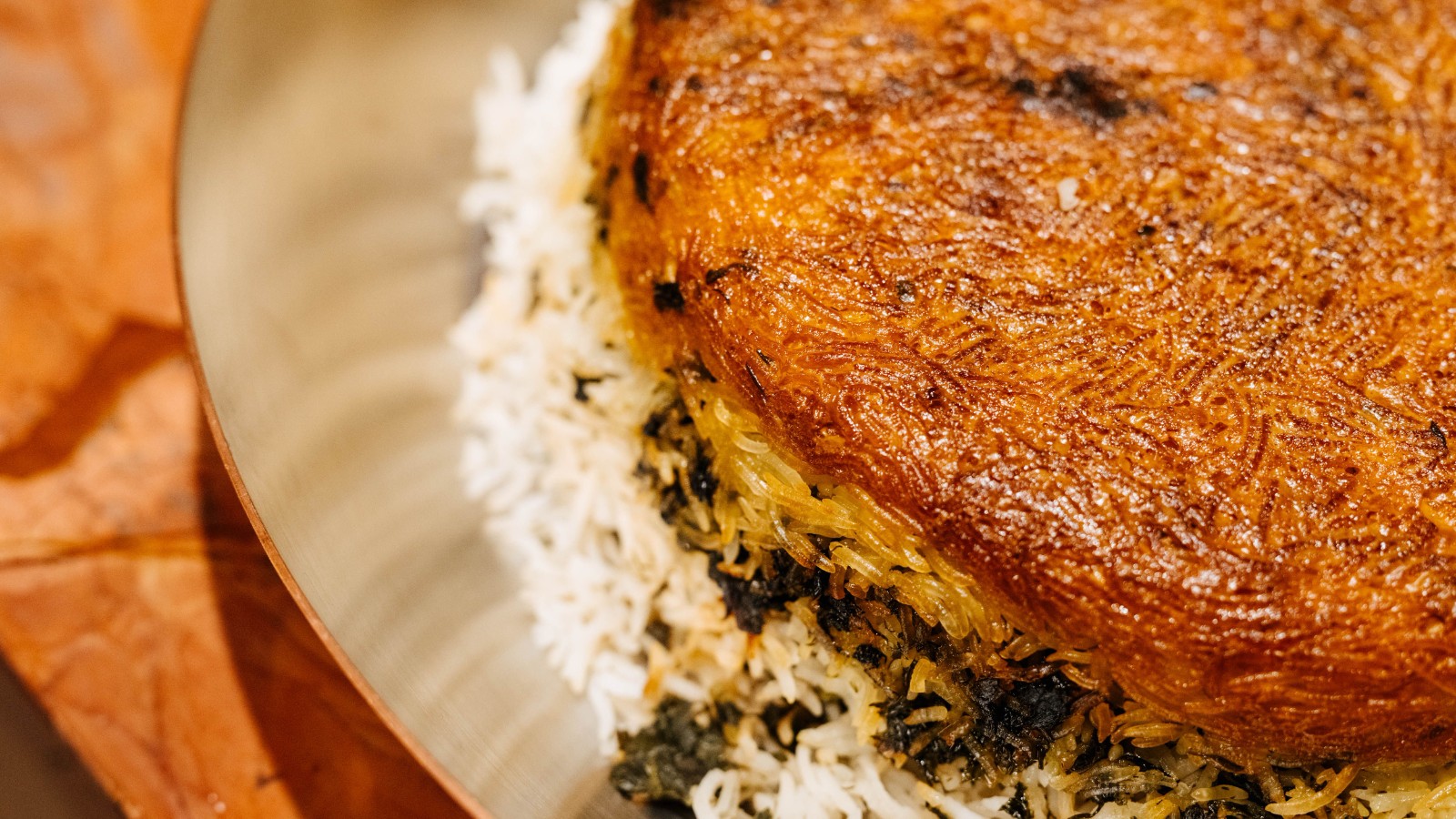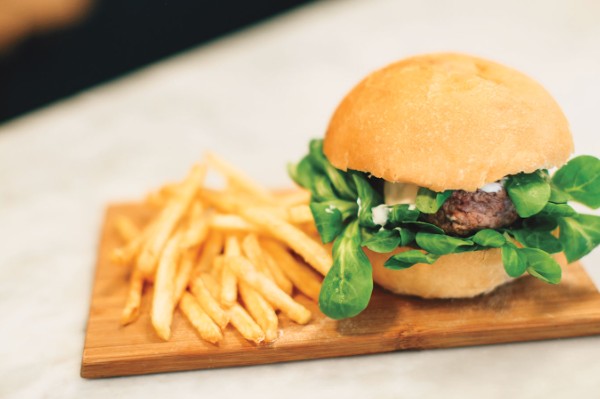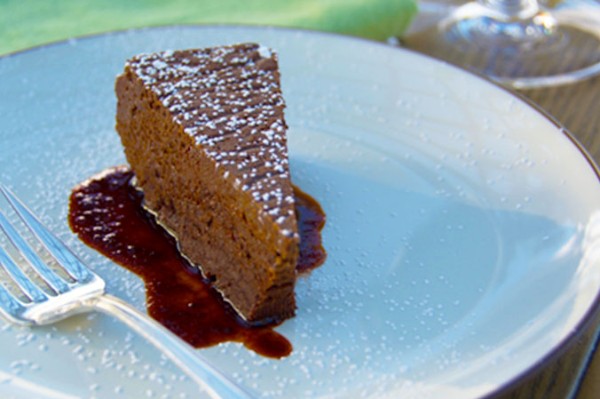Tahdig refers to the saffron-infused layer that cooks on the bottom of the dish and is often inverted to create a crispy topping.
The moment when grapevine buds break open is a welcome sign of spring in Napa Valley. But for Darioush Khaledi, his wife Shahpar and other natives of Iran, the most exciting part of springtime is Nowruz. Celebrated on March 20 on the Persian calendar, this ancient tradition rooted in Zoroastrian faith celebrates the return of longer days as the triumph of good over evil. The celebration is full of symbolism, and the Khaledis adorn their Darioush winery and home with flowers, colors and foods that each carry a special meaning. On the dinner table, the traditional Nowruz dishes are whitefish adorned with dill and tahdig, an herbed basmati rice with a crispy topping. And it wouldn’t be Nowruz without a bottle of Darioush Pinot Noir. “In Iran, most of the wines are red wines. I remember that from my childhood,” says Darioush. “We drink red wine with all kinds of food.”
Persian Herbed Rice (Tahdig)
Makes 6-8 servings
- 2 ½ cups long grain Basmati rice
- Kosher salt, divided
- ¼ tsp. saffron threads
- 2 Tbsps. plus ¼ cup boiling water, divided
- 1 cup fresh parsley, finely chopped
- 1 cup fresh cilantro, finely chopped
- 1 cup fresh dillweed, finely chopped
- 1 cup green onions, finely chopped
- 4 garlic cloves, minced
- ¼ cup grapeseed or olive oil
- 2 whole pitas, sliced into sections of 4 (or 1 cup golden potatoes, cut into ½-inch slices)
- 3 Tbsps. butter, melted
- Place rice in a medium bowl and cover with tepid water. Gently swish it around to activate the starches, then tip the bowl to drain water. Repeat this process until water runs clear, about 7 rinses. Cover rice with cold water, add 1 tablespoon salt, stir gently, and soak for 1 hour. Drain rice without rinsing.
- Crush saffron threads to a powder in a small mortar and pestle. Transfer to a small bowl with 2 tablespoons boiling water. Stir, cover, and set saffron water aside.
- Fill a 5-quart nonstick pot (with a lid) with 12 cups water and bring to a boil over medium-high heat. Add 1 tablespoon salt and stir until dissolved. Add rice, stir once gently and watch carefully as it cooks so water does not boil over. Cook rice until the first piece pops up to the surface. Set a timer for 4 minutes and cook, scooping off any foam from the surface, until the timer goes off. Test rice and continue to cook until tender on the outside but still firm to the bite on the inside, 6 to 8 minutes more.
- Drain rice in a colander and rinse quickly with lukewarm water to rinse off extra starch. Set aside to drain completely. Wash and dry the pot.
- Combine chopped parsley, cilantro, dill, chives and green onion with garlic in a medium bowl. Gently combine herb mixture with rice in the colander, taking care not to break the grains of rice.
- Place the clean pot over medium heat. Add oil, 1 tablespoon saffron water and a pinch of salt; swirl the pot until the bottom and lower sides are coated with the oil mixture.
- Cover the bottom of the pot with the pita pieces (or potato slices) to create the tahdig layer.
- Gently scatter the rice-herb mixture over the tahdig, making sure pita pieces (or potato slices) are completely covered. Gently poke the handle of a wooden spoon into the rice a few times, being careful not to hit the tahdig; this will allow steam to escape while cooking. Cover and cook until you see steam escaping from the sides of the lid and tahdig starts to set, 10 to 13 minutes.
- Test the tahdig by quickly tapping the side of the pot with a wooden spoon. When the pot sizzles, remove it from the heat. Remove the lid and place it on the kitchen towel, being careful that none of the condensation drips into the pot. Wrap the towel around the lid and secure the ends at the top by the handle so they will not hang near the heat source. Combine remaining saffron water, melted butter and boiling water and drizzle the butter mixture over the rice. Cover with the towel-wrapped lid.
- Place a heat diffuser on a burner over low or medium-low heat and return the pot to the stove. Cook until a bit crispy, rotating the pot a few times, about 45 minutes. Remove from the heat and place on a damp kitchen towel; let sit, uncovered, for 5 minutes so tahdig will release easily.
- Serve the rice on a platter and remove the tahdig whole or in pieces and serve. Or, invert carefully but quickly (like a cake) onto a serving platter.
Note: Herbs, green onions and garlic can be chopped finely in a food processor, but be sure not to process to a paste. Best to pulse.




